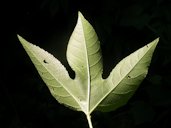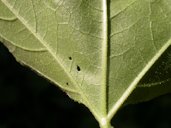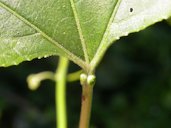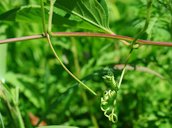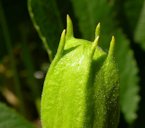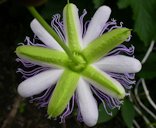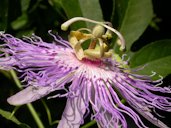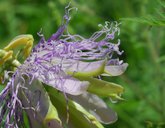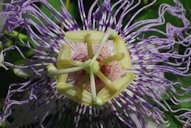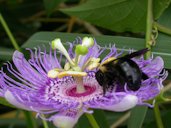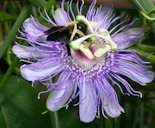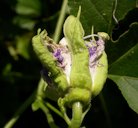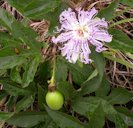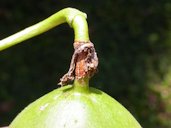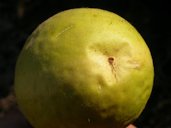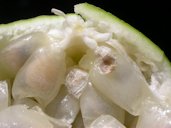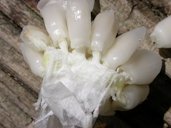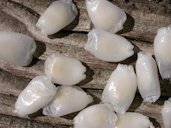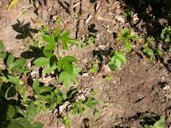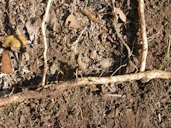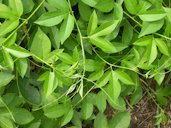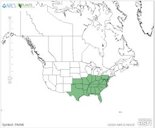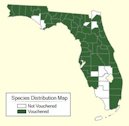| Maypop - Passiflora incarnata | |||||||||||||||||||||||||||||||||||||||||||||||||||
|---|---|---|---|---|---|---|---|---|---|---|---|---|---|---|---|---|---|---|---|---|---|---|---|---|---|---|---|---|---|---|---|---|---|---|---|---|---|---|---|---|---|---|---|---|---|---|---|---|---|---|---|
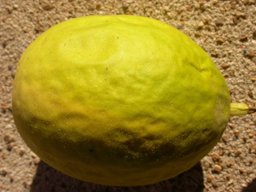 Fig. 1 Passiflora incarnata, mature fallen fruit 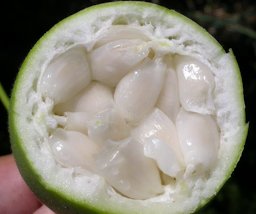 Fig. 2 Cross-section fruit showing the three parietal placentas 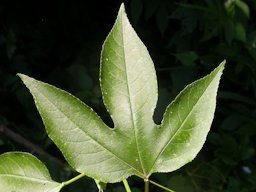 Fig. 3  P. incarnata, leaf upper surface 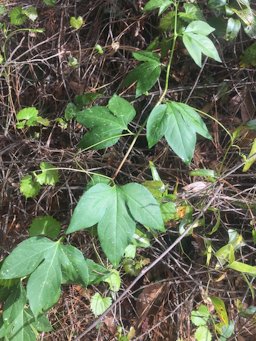 Fig. 4  Purple passionflower P. incarnata leaf habit, University of Florida 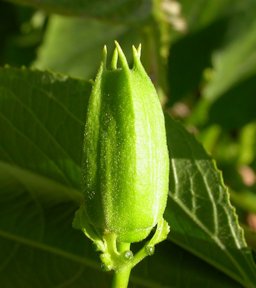 Fig. 10  Flower bud, the midrib of the sepals extending as a hornlike structure, the subtending floral bracts with prominent glands 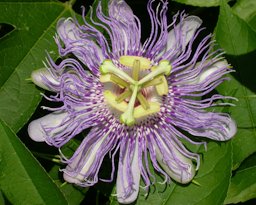 Fig. 11  Flower, top view  Fig. 12  P. incarnata L. white 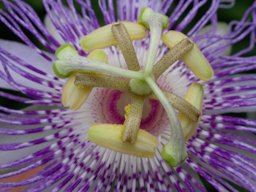 Fig. 13  Androgynophore with attached androecium and gynoecium  Fig. 14  P. incarnata, habit 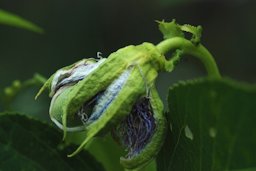 Fig. 15 Fig. 15  P. incarnata (Passifloraceae) - fruit - juvenile. Arkansas, US 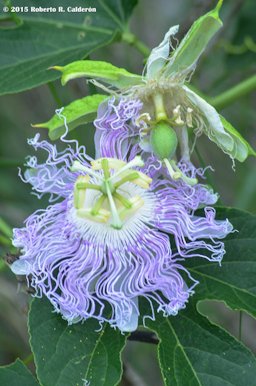 Fig. 25  Purple passionflower P. incarnata 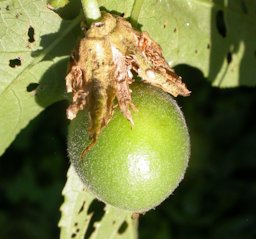 Fig. 26 Young fruit  Fig. 27  Nearly mature fruits 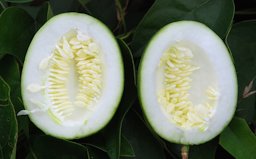 Fig. 28  P. incarnata (Passifloraceae) - fruit - section or open 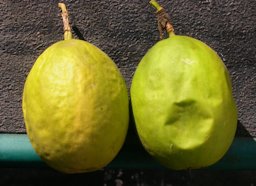 Fig. 29 Mature, fallen fruits  Fig. 30 P. incarnata, seeds (length about 6mm) 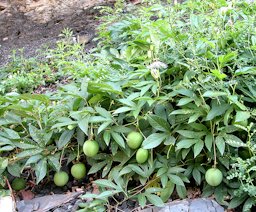 Fig. 37  P. incarnata, fruit at mid-summer Fig. 38  P. incarnata, Golden Gate National Recreation Area, California 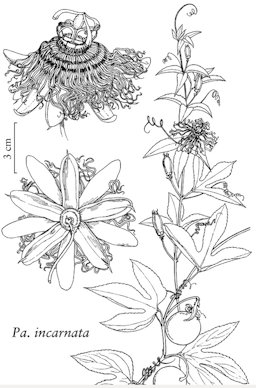 Fig. 39  P. incarnata illustration |
Scientific
name Passiflora incarnata L. Pronunciation pass-siff-FLOR-ruh in-kar-NAY-tuh 1 Common names English: apricot-vine, maypop, maypop passionflower, passionflower, old field apricot, Holy-Trinity flower, mayapple, molly-pop, pop-apple, granadilla, maycock, maracoc, maracock, white sarsaparilla; French: passiflore rouge; German: Passionsblume, Winterharte Passionsblume; Swedish: läkepassionsblomma 4,5 Synonyms Granadilla incarnata (L.), P. edulis var. kerii (Spreng.) Mast., P. kerii Spreng., P. rigidula Jacq. 3 Relatives Purple passionfruit (P. edulis); yellow passionfruit (P. edulis f. flavicarpa); fragrant granadilla (P. alata); red granadilla (P. coccinea); yellow granadilla (P. Laurifolia); sweet granadilla (P. ligularis); sweet calabash (P. maliformis); banana passionfruit, (P. mollissima); giant granadilla (P. quadrangularis) 6 Family Passifloraceae (passion flower family) Origin Native to Southeastern US USDA hardiness zones 7b-11 1 Uses Food; privacy screen; outstanding ornamental features; attracts pollinators; wildlife food source Height Depends on the structure on which it climbs 1 Spread 25 ft (7.6 m) 14 Plant habit Woody in warm winter climates; herbaceous (dies to the ground) in cold winter climates 13 Growth rate Fast; can grow six feet a season and several feet wide 7 Longevity Perennial Pruning requirement Removal of suckers regularly is advised to prevent the vine from spreading Leaves Evergreen; 3-lobed, deeply divided; 3-nerved; 2.4-6 in. (60-150 mm) long, 2-4.8 in. (50-120 mm) 2 Flowers Very variable, white, mauve, pink or lilac: 2.8-3.6 in. (70-90 mm); summer flowering; fall flowering 1,2 Fruit Berry; very edible; ovoid, 2.4 in. (60 mm) long; lime green or yellow when ripe 2 Season June-July Light requirement Full sun to partial shade 7 Soil tolerances Occasionally wet; acidic; slightly alkaline; sand; loam; clay 1 pH preference Acid, neutral and basic (alkaline) soils Drought tolerance High 1 Soil salt tolerance Moderate 1 Cold tolerance Can take temperatures down to 5 °F (-15 °C) 7 Plant spacing 36-60 in. (91.5 -150 cm) 1 Roots Spread by rizomes (Fig. 40,41) Invasive potential * None reported Pest resistance Suseptible to nematodes; long-term health usually not affected by pests 1,17 Known hazard Extreme flammability; aggressive, spreading plant; maypops’ green skin is edible raw but too many can burn the mouth 1,7,13 Reading Material Passiflora incarnata Wild Passion Flower, Maypop, University of Florida pdf Passiflora incarnata, Floridata Purple Passionflower, USDA NRCS National Plant Data Center pdf Maypops Mania, Eat the Weeds and other things, too Origin Native to Southeastern US, from Virginia to Missouri to Florida and Texas. Description Passiflora incarnata is by far the most showy with pink and purple 4-inch-wide flowers appearing in the warm months. Although its natural range extends only slightly into south Florida, it can probably be grown in most of south Florida with little trouble. In most cases, this plant would be preferable over introduced species such as Passiflora foetida which has become invasive in Palm Beach County and is spreading. 1 It is a very herbaceous plant and will die back to ground level without being frosted. Once established, its thick fleshy roots will sustain it through most cold winters, and the vine will regrow from a depth in excess of one meter (3 feet) below the ground. Given a free root run it will produce sucker growths often some considerable distance from the parent plant. 2 Leaves The leaves are tree-lobed, deeply divided; 3-nerved; 2.4-6 in. (60-150 mm) long along the midnerve, 2-4.8 in. (50-120 mm) along lateral nerve. The petiole is 3.2 in. (80 mm) long, the two petiole glands are located at the apex and are sessile (Fig. 7). 2 Some gardeners mistake passion flower for an invasive species because of its tropical appearance and aggressive growth rate. 17
Fig. 5. P. incarnata L., leaf lower surface Fig. 6. Leaf base, lower surface Fig. 7. Note extra-floral nectaries at apex of petiole Fig. 8. Stem and node Fig. 9. Stem and tendrils Flowers The lovely sweet-scented mauve, lilac or white flowers (Fig. 12) may be extraordinarily variable even within a single plant. The first flower of a seedling may be different in shape and colour from subsequent flowers the following year. This variation or deterioration of the flower seems to continue as the plant ages, but this may be caused by a virus. 2 The flowers, which are produced singly in the axils of the leaves, are one and a half to two inches across. The open blossoms exude a delicious lemon musk aroma. Each flower lasts for one day only, opening in late morning then closing by nightfall. 12 The buds open one by one beginning at the oldest part of the vine and proceed sequentially along its length. 15 The vines blossom for a long time and set fruit over the same period so one vine can have old and young fruit at the same time. 7
Fig. 16. Closeup of a flower bud, the midrib of the sepals extending as a hornlike structure Fig. 17. Flower, bottom view where the alternating tepals are green, these being the sepals that enclosed the bud before blooming Fig. 18. Flower, side view Fig. 19. Floral bracts with glands Fig. 20. Awned sepals Fig. 21. Three styles with pendant stigmas, and five stamens with pendant anthers Pollination Maypop flowers need cross-pollination in order to set fruit, yet even when pollinated not all flowers will fruit. The flowers are andromonoecious which means that on every plant some flowers are perfect and some are functionally male. Functional males have female parts but are functionally male either because their stigmas are held upwards out of the way of insect visitors or because their female parts are atrophied. A maypop plant adjusts the types of flowers it has through the season to growing conditions. As more fruits set or light becomes limiting, fewer perfect flowers are produced. An increasing percentage of flowers are male as the season progresses, unless not fruits have set already. A fruit follows each successfully fertilized flower by two to three months. 12 P. incarnata is usually pollinated by carpenter bees (Xylocopa spp.). 9 The flowers appear to be perfectly suitable for bumblebee pollination (Fig. 22,23). As the bees look for nectar, the pollen filled flower anthers brush the back of the bee and, when the bee moves to the next flower, the pollen is readily transferred to the central sticky stigma. 10
Fig. 22. Bumble bee pollination, styles up Fig. 23. Bumble bee pollination, styles down Fig. 24. Pollinated flower Fruit The plants bloom from June to September. The pulpy fruit or “maypop” develops in two to three months after flowering and may be harvested from July to October. 14 Sweet-smelling, yellowish fruits develop in two to three months after flowering and may be harvested from July to October. The pulpy fruit, or “maypop”, is large and oval, about the size of a hen’s egg (4 to 10 cm long). The fruit contains many flattened, dark-colored seeds (4 to 6 mm long) that are covered with an arillate pulp, which is the edible portion of the fruit. 5 Shaped like a egg, the fruit starts out green and hollow and eventually fills with a kind of jelly and seeds while also turning yellow on the outside. 7 Though some maypop plants bear fruits that are unpleasant to taste or even smell, the best plants bear fruits that are aromatic, with a deliciously semisweet, melting taste similar to that of apricot. 12
Fig. 31. Flower and young fruit Fig. 32. Fruiting pedicel and androgynophore Fig. 33. Stylar end of mature, fallen fruit Fig. 34. Seed attachments to the placenta Fig. 35. Segment of detached placenta with attached seeds Fig. 36. Seeds surrounded by an aril Harvesting “Maypop” is a two-season name. Here in Florida and other parts of the south they can blossom in May. But the fruits don’t get big enough to step on and “pop” until June or July. 7 A single plant might produce a dozen of so fruits through the season. 12 For best flavor, let a fruit mature, then drop to the ground before gathering it up. Handle it gently, for the skin is thin, possibly wrinkled (Fig. 29). Store it for a week or two in a cool, not overly dry, room to allow full flavor to develop. Scoop out the pulp with a spoon, suck off the juice, then spit out the seeds. Or, scoop out the inside and eat if seeds and all, like a pomegranate. 12 Propagation Maypops are easily propagated by seeds, shoot cutting, and root cutting. In common with other weedy plants, maypop seeds germinate under a wide range of conditions. Depth of planting is probably not important; maypop seeds have been know to germinate from almost half a foot deep with the soil. Tip cuttings and root cuttings need no special treatment. You can probably expect one hundred percent success from root cutting two to three inches long that are planted just below the soil surface and kept between seventy and ninety degrees Fahrenheit. 12
Fig. 40. Young, spreading stems arising from rhizomes Fig. 41. Excavated rhizome with young stems, closeup Fig. 42. Leafy vine with tendrils Planting Plant passion flower at the base of a fence, trellis, or arbor. These species perform best in full sun but can tolerate some shade. Because the vines spread, plant it where it has room to roam. Passion flower will grow as high and as wide as the structure it grows along. 17 Planting and Trellising of the Passiflora Vine, University of Florida Training It is recommended to train the vines onto trellis and fences to limit propagation. 9 Training maypops on some sort of a support brings the flowers to eye level and facilitates harvesting the fruits. The curling tendrils grab on to a variety of supports, such as chain-link fencing, pieces of string stretched vertically, and wooden latticework. Allow between thirty and forty square feet of support per plant. 12 Pruning Established plants can spread above and below ground like weeds, especially in warmer climates. New shoots from underground roots (Fig. 40,41) have even been known to pop up on the far side of a sidewalk. The plant must be kept under control. The best way is to pull unwanted suckers with a quick jerk when they are three inches high. 12 Fertilizing Fertilize two or three times each year to maintain vigorous growth. 1 Pests Nematodes can be a serious problem. Caterpillars slow growth by eating foliage. 1 No insect or disease pest worth mentioning affects maypop. Nectaries at the bases of the flowers attract ants, which have been shown to keep many insect pests at bay. 12 Food Uses In Europe a teaspoon of dried, ground plant is used in a tea. 7 Yellow fruit is ripe and can be eaten out of hand. They can be made in to a jelly or a marmalade. Green ones taste better cooked than raw, yellow ones are nice raw. Leaves are eaten raw or cooked. Said to be delicious as a cooked vegetable or when eaten in salads. Flowers are edible with a vegetal flavor, best used as a garnish, cooked as a vegetable or made into syrup. 11,13 Medicinal Properties ** According to the Memorial Sloan-Kettering Cancer Center Website: Derived from the aerial parts of the plant. Patients use this herb to treat insomnia, anxiety, epilepsy, neuralgia, and withdrawal syndromes from opiates or benzodiazepines. The active component of passionflower is unknown. The alkaloid components (e.g. harman, harmaline) are thought to produce monoamine oxidase inhibition, while the maltol and gamma-pyrone derivatives cause activation of GABA receptors. Reported adverse events include sedation, dizziness, impaired cognitive function, and one case report of nausea, vomiting, and ECG changes. All adverse events subside following discontinuation of passionflower. Theoretically, passionflower may potentiate the sedative effect of centrally acting substances (e.g. benzodiazepines, barbiturates, alcohol). A small pilot study evaluated passionflower for generalized anxiety and showed comparable efficacy to oxazepam, but a systematic review concluded that randomized controlled studies are needed to confirm such effects. Passionflower may be of use in combination with clonidine for opiate detoxification, but additional research is required. No standardization exists for passionflower extract, therefore dosages and activities may vary. 7 Europeans currently make pharmaceuticals. The fresh and dried whole plant has been used to treat nervous anxiety and insomnia. It is the most common ingredient in herbal sedatives in Europe. Even a sedative gum has been made with Maypop. 7 P. incarnata has some monoamine oxidase inhibition inhibitors. MAO inhibitors and chocolate should not be combined. 7 No Toxicity The American Pharmaceutical Association Practical Guide to Natural Medicines by Andrea Peirce states: “Unlike other Passiflora species, … [the] Passionflower does not contain the poison cyanide, as some sources incorrectly suggest; they may have mistaken Passiflora incarnata for Passiflora caerulea, the ornamental blue passionflower that does contain this toxin.” 7 Other Uses The passion flower vine plays a very important role with some of Wakulla County’s insect residents. It, and other less common passion flower varieties, is the exclusive host plant for the Gulf Fritillary butterfly’s caterpillar and a major food source for the Variegated Fritillary’s caterpillar. The Gulf Fritillary caterpillar is bright orange and covered with rows of medium length black spines. The spines are soft to the touch and do not sting, but if eaten the larva is toxic. Gulf Fritillary butterflies are a muted orange with a large silver spot on the underside of each wing. They noted for their ability to traverse the Gulf of Mexico and travel as far as Argentina. 16 Gulf Fritillary Butterfly, Agraulis vanillae (Linnaeus), University of Florida pdf Other Edible Passiflora species: Passionfruit, P. edulis/P. edulis flavicarpa Water Lemon, P. laurifolia Giant Granadilla, P. quadrangularis General The name comes from “maracock” which is what the Powhatan Indians called it. This dazzling regional native has been appreciated by many cultures. The Cherokee term for this bloom is Ocoee. This identifier lives on in Tennessee where the Ocoee River and the Ocoee Valley are still associated with this plant. 16 Members of this genus are often grown for their attraction to butterflies. 1 The name 'passion flower' was given to this plant by Catholic priests, to whom the flower represented the passion of Christ. The ten sepals and petals represented the ten apostles at the Crucifixion; the fringed crown represented the crown of thorns and the five stamens and three styles represented the wounds and nails, respectively. The tendrils were the cords or scourges; the lobed leaves represented the hands of the persecutors. The white symbolized purity and the blue, the heavens. 8
Fig. 43. Natural Distribution of P. incarnata L., purple passionflower Fig. 44. Florida maypop distribution map, wild populations Further Reading Passionfruit The World Over, California Rare Fruit Growers pdf Passiflora Society International ext link Passiflora Online ext link Maypop Botanical Art Older Material Edible Fruited Passiflora Adapted to South Florida Growing Conditions, 1976, Florida State Horticulture Society pdf List of Growers and Vendors |
||||||||||||||||||||||||||||||||||||||||||||||||||
| Bibliography 1 Gilman, Edward F. "Passiflora incarnata Wild Passion Flower, Maypop." Environmental Horticulture Dept., University of Florida, IFAS Extension, FPS457, Original pub. Oct. 1999, Reviewed Feb. 2014, AskIFAS, edis.ifas.ufl.edu/fp457. Accessed 28 Nov. 2019. 2 Vanderplank, John. Passion Flowers. 2nd ed. 1991, London, Cassell Publishers, 1996. 3 Hassler, M. " Species Details: Passiflora incarnata L." Species 2000 & ITIS, Catalogue of Life: 2019 Annual Checklist, World Plants:Synonymic Checklists of the Vascular Plants of the World (version Nov 2018), World Plants, www.catalogueoflife.org/annual-checklist/2019. Accessed 29 Nov. 2019. 4 "Taxon: Passiflora incarnata L." USDA, Agricultural Research Service, National Plant Germplasm System, Germplasm Resources Information Network (GRIN-Taxonomy), National Germplasm Resources Laboratory, Beltsville, Maryland, 2019, U.S. National Plant Germplasm System, npgsweb.ars-grin.gov/gringlobal/taxonomydetail.aspx?id=26977. Accessed 29 Nov. 2019. 5 "Passiflora incarnata L., purple passionflower." USDA, NRCS, National Plant Data Team, Greensboro, NC 27401-4901, USA, 2019, The PLANTS Database, plants.usda.gov/plantguide/pdf/cs_pain6.pdf. Accessed 29 Nov. 2019. 6 "Passionfruit." California Rare Fruit Growers, crfg.org.pubs/ff/passionfruit.html. Accessed 14 Nov. 2019. 7 Deane, Green. "Maypops Mania." Eat the Weeds and other things, too, www.eattheweeds.com/maypops-food-fun-medicine-2/. Accessed 3 Dec. 2019. 8 The Encyclopedia of Fruit & Nuts. Edited by Jules Janick and Robert E. Paull, Cambridge, CABI, 2008. 9 McGuire, Christopher M. "Passiflora incarnata (Passifloraceae): A new fruit crop." Economic Botany, Apr. 1999, Vo. 53, Issue 2, pp 161–176, EOL, eol.org/pages/51376466/articles#cite_note-ReferenceA-5. Accessed 3 Dec. 2019. 10 "Passiflora incarnata." Wikipedia EN, Encyclopedia of Life, EOL, (CC BY-SA 3.0), eol.org/pages/51376466/articles#cite_note-ReferenceA-5. Accessed 3 Dec. 2019. 11 Facciola. S. Cornucopia II A Source Book of Edible Plants. Vista, Kampong Publications, 1998. 12 Reich, Lee. Uncommon Fruits for Every Garden. Portland, Timber Press, 2004. 13 "Passiflora incarnata." Plant Detail, NC State University, Cooperative Extension, NC State, plants.ces.ncsu.edu/plants/passiflora-incarnata/. Accessed 4 Dec. 2019. 14 "Purple Passionflower, Passiflora incarnata L." Plant Fact Sheet, USDA Natural Resources Conservation Service, 15 Aug. 2008, USDA NRSC, plants.usda.gov/factsheet/pdf/fs_pain6.pdf. Accessed 4 Dec. 2019. 15 Christman, Steve. "Passiflora incarnata." Floridata, no. 77, Published 1 Dec. 1996, Updated 3 Jan. 2001, 11 July 2002, 23 Aug. 2003, floridata.com/plant/77. Accessed 15 Feb. 2021. 16 Harrison, Les. "Passionate About Passion Flowers." UF/IFAS Extension Wakulla County, 24 July 2013, AskIFAS, blogs.ifas.ufl.edu/wakullaco/2013/07/24/passionate-about-passion-flowers/. Accessed 5 July 2022. 17 "Passion Flower." Gardening Solutions, 8 June 2022, AskIFAS, gardeningsolutions.ifas.ufl.edu/plants/ornamentals/passion-flower.html. Accessed 5 July 2022. Photographs Fig. 1,2,3,5,6,7,24,26 Davidse, Gerrit. "Passiflora incarnata L." Tropicos.org, Missouri Botanical Garden, United States, Missouri, Perry, no. 39723, Tropicos®, (CC BY-NC-SA 3.0), www.tropicos.org/Name/24200150?tab=images. Accessed 28 Nov. 2019. Fig. 4 Testo, Weston. "Purple Passionflower Passiflora incarnata. University of Florida, Gainesville, FL, US." iNaturalist, via GBIF, 1551280138, 27 Feb. 2019, (CC BY-NC 4.0), www.inaturalist.org/photos/32088144. Accessed 2 Dec. 2019. Fig. 8,9,14,20,21 Turner, Steve R. "Passiflora incarnata L." Tropicos.org, Missouri Botanical Garden, United States, Missouri, Perry, no. 14-170, 13 Aug. 2014, Tropicos®, (CC BY-NC-SA 3.0), Image Cropped, www.tropicos.org/Name/24200150?tab=images. Accessed 28 Nov. 2019. Fig. 10,11,13,16,17,18,19,22,23,27,29,31,32,33,34,35,36,40,41,42 Davidse, Gerrit. "Passiflora incarnata L." Tropicos.org, Missouri Botanical Garden, United States, Missouri, Perry, no. 42505, Tropicos®, (CC BY-NC-SA 3.0), Images cropped, www.tropicos.org/Name/24200150?tab=images. Accessed 28 Nov. 2019. Fig. 12 Griffith, Floyd. "Passiflora incarnata L." Institute for Systematic Botany, University of South Florida, Tampa, S. M. Landry and K. N. Campbell (application development), USF Water Institute, 2019, Atlas of Florida Plants, florida.plantatlas.usf.edu/photo.aspx?ID=1477. Accessed 2 Dec. 2019. Fig. 15 Thomas, Ron. "Passiflora incarnata (Passifloraceae) - fruit - juvenile. Arkansas, US." Bioimages Vanderbilt DwCA, bioimages.vanderbilt.edu/thomas/0106-01, 6 July 2007, EOL, (CC BY-NC-SA 4.0), eol.org/pages/51016095/media. Accessed 2 Dec. 2019. Fig. 25 Calderón, Roberto R. "Purple Passionflower Passiflora incarnata." iNaturalist, 2423911, 20 Sept. 2015, EOL, (CC BY-NC 4.0), eol.org/media/4251575. Accessed 3 Dec. 2019. Fig. 28 Thomas, Ron. "Passiflora incarnata (Passifloraceae) - fruit - section or open." Bioimages Vanderbilt DwCA, bioimages.vanderbilt.edu/thomas/0106-01.htm, 6 July 2007, EOL, (CC BY-NC-SA 4.0), Image cropped, eol.org/media/9284042. Accessed 3 Dec. 2019. Fig. 30 Density. "Passiflora incarnata, seeds (length about 6mm)." Commons Wkimedia, 26 Mar. 2009, (CC BY-SA 3.0), GFDL, commons.wikimedia.org/wiki/Passiflora_incarnata#/media/File:Passiflora_incarnata_seeds.jpg. Accessed 29 Nov. 2019. Fig. 37 Pollinator. "Passiflora incarnata, fruit at mid-summer." Commons Wikimedia, via English Wikipedia, 23 Feb. 2006, (CC BY-SA 3.0), GFDL, commons.wikimedia.org/wiki/Passiflora_incarnata#/media/File:Passiflora_fruit_8043.jpg. Accessed 2 Dec. 2019. Fig. 38 Agarwal, Robin Gwen. "Passiflora incarnata, Golden Gate National Recreation Area, California, US." iNaturalist, 2397217, 17 Sept. 2015, EOL, (CC BY-NC 4.0), eol.org/media/4251572. Accessed 3 Dec. 2019. Fig. 39 "Taxon: Passiflora incarnata." Flora of North America, Missouri Botanical Garden, St. Louis, MO & Harvard University Herbaria, Cambridge, MA., eFloras, www.efloras.org/object_page.aspx?object_id=128265&flora_id=1. Accessed 2 Dec. 2019. Fig. 43 "Passiflora incarnata L., purple passionflower." USDA, NRCS, National Plant Data Team, Greensboro, NC 27401-4901, USA, 2019, The PLANTS Database, plants.usda.gov/java/profile?symbol=PAIN6. Accessed 29 Nov. 2019. Fig. 44 Wunderlin, R. P., et al. "Passiflora incarnata L." Institute for Systematic Botany, University of South Florida, Tampa, S. M. Landry and K. N. Campbell (application development), USF Water Institute, 2019, Atlas of Florida Plants, florida.plantatlas.usf.edu/Plant.aspx?id=3464. Accessed 2 Dec. 2019. * UF/IFAS Assessment of Non-native Plants in Florida's Natural Areas ** Information provided is not intended to be used as a guide for treatment of medical conditions. Published 6 Dec. 2019 LR. Last update 5 July 2022 LR |
|||||||||||||||||||||||||||||||||||||||||||||||||||
